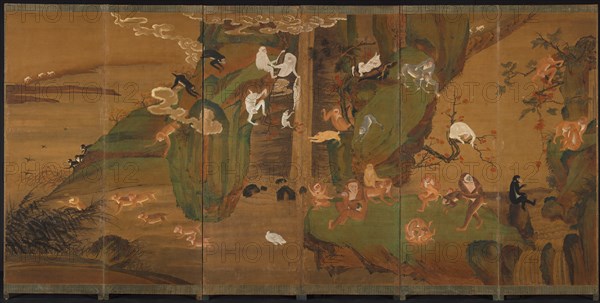
Sujet
Gibbons in a Landscape, late 1800s or early 1900s. Creator: Unknown.
Légende
Gibbons in a Landscape, late 1800s or early 1900s. In contrast to the normal pairing of six-fold screens in Japanese culture, Korean screens are typically eight- or ten-fold, and are not linked as a pair. Also, Korean screens are traditionally mounted on raised "feet." The subject of this composition surely refers to a land of immortality, inhabited by gibbon families and a single white crane. Daoism and its cult of immortality enjoyed popularity during the Choson period, and lavish screens of this genre were produced for the imperial palace and court. and in aristocratic homes. Such visual emblems of longevity were naturally considered auspicious accessories at court ceremonies too. The dynamic composition and vivid palette of mineral pigments combine to produce an "otherworldly" setting for the frolicking gibbons.
Date
0
Crédit
Photo12/Heritage Images/Heritage Art
Notre référence
HRM19F84_112
Model release
NA
Property release
NA
Licence
Droits gérés
Format disponible
247,0Mo (8,3Mo) / 110,7cm x 55,9cm / 13075 x 6604 (300dpi)